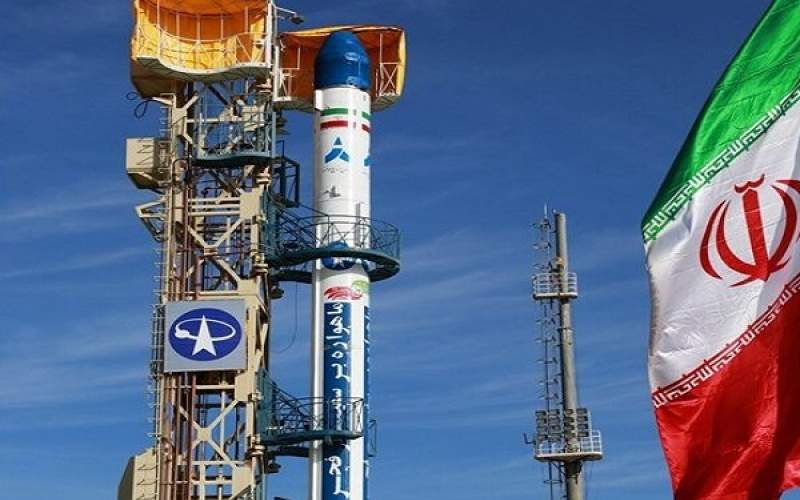The Iran Project
: The Islamic Republic of Iran marks National Space Technology Day on February 3 to reevaluate its scientific progress in space and technology that is a symbol of the country’s authority in the world despite unilateral sanctions.
Saturday 3 February 2024 - 15:38
Story Code : 414225
Source : Mehr News
National Space Technology Day symbol of Iran’s authority
Iran launched its first homemade satellite, ‘Omid’ (Hope), in 2009. After being launched by an Iranian-made carrier rocket, Safir 1, the satellite was placed into a low Earth orbit.
The launch, which coincided with the 30th anniversary of the Islamic Revolution was also verified by NASA the following day as a success. The launch of Omid made Iran the ninth country to develop an indigenous satellite launch capability.
After this big event, developing different aspects of the space industry and self-reliance in this field were included in the general policies of the country. Since then, every year on this day all the experts in this field gather to envision new aspects of the roles of space technology and its multiple applications.
Recently on January 28, 2024, for the first time, the Islamic Republic of Iran successfully put three homegrown satellites including Mahda, Keyhan-2, and Hatef-1 into space orbits with minimum and maximum altitudes of 450 km and 1,100 km above the Earth's surface, getting close to reaching the Geostationary Orbit (GEO), also known as geosynchronous orbit, after years.
The latest launch, carried out on Sunday using Simorgh satellite carrier, reached the Earth's elliptical orbit, making it distinctive from the country’s previous launches that put satellites into space orbits with the altitude of 400 to 750 km above the Earth’s surface.
The current launch is regarded as a significant move by Iran, as it marks the first step by the country to reach the Geostationary Transfer Orbit (GTO) and then access the GEO which has an approximate altitude of 36,000 km above the Earth’s surface.
On May 6, 2020, in pointing to the achievement of the Islamic Revolutionary Guard Corps in launching the Nour Satellite into space, Leader of the Islamic Revolution Ayatollah Seyed Ali Khamenei stated, “Unfortunately, some people in the country constantly say that it’s impossible and that we can’t; however, we are perfectly capable. The reason for this is that when we are capable of launching a satellite into space with a speed of 7,500 m/s, can successfully put the satellite in orbit, and can make great progress in the area of defense industries, we are equally capable of achieving a surge in production.”
He added, “The wisdom and thought that can build such a satellite and set themselves the goal of launching another satellite with an orbit of 36,000 kilometers definitely have the spirit, innovation, and creativity to build automobiles with a 5 L/100 km fuel consumption rate and to develop other areas of production.”
On January 5, 2023, Iranian President Ebrahim Raeisi said that the space industry is among the country's assets and also among the propelling industries, whose advancement alongside other industries and sciences, would contribute to the enhancement of the country's overall strength.
He added, "Space sciences and industries are, today, one of the world's booming economic and commercial arenas," expressing the necessity of "commercialization of this science and industry."
Iran's Space Agency is set to launch 10 more satellites, marking a substantial leap while revealing a state-of-the-art 1.5-ton biospace capsule, showcasing the country's remarkable progress in biospace technology.
Hossein Daliriyan, the agency's spokesperson, announced the readiness for the imminent launch of additional satellites, saying plans to carry out more launches before the Iranian New Year (starts on March 21, 2024) are underway, as is the development of a new 1.5-ton capsule.
He emphasized Iran's self-reliance in this industry, highlighting the country's independent ownership across all three sectors compared to other countries with similar capabilities. He mentioned that Iran is among the 12 countries that have this technology.
Iran's ongoing efforts to construct a more advanced 1.5-ton biospace capsule aim to exceed previous capabilities, particularly targeting human-carrying capacity after the successful launch of the Kavos capsule.
He outlined enhancements in the upcoming capsule, emphasizing improvements in manual control systems, a significant leap from previous models.
“Iran is currently constructing its next biospace capsule weighing 1.5 tons, intending to surpass the capabilities of the previous capsule. (The country's space industry) aims to achieve human-carrying capacity, following the successful launch of the Kavos biospace capsule,” he said.
Reporter : Editorial of The Iran Project











